Mooring dolphin
Table of contents
1. Mooring dolphins, breasting dolphins
Dolphins are piles driven into the ground in waterways and harbors to give ships a place to dock or moor.
Dolphins have different tasks: as breasting dolphins they must be dimensioned for ship impact, as mooring dolphins the load results only from the rope tension.
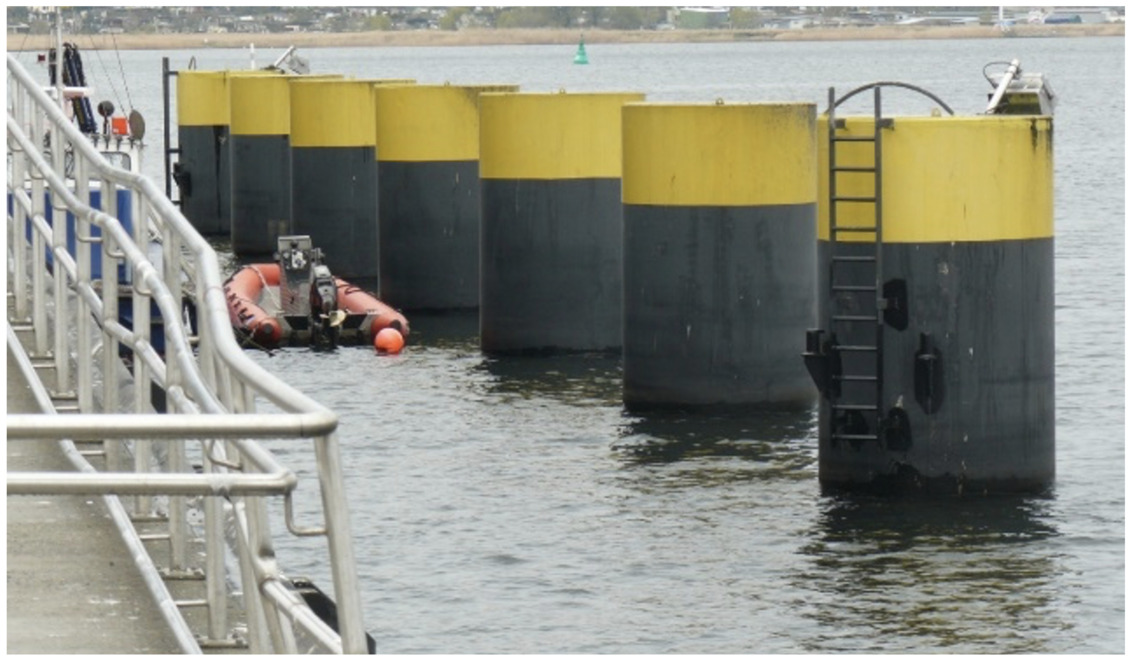
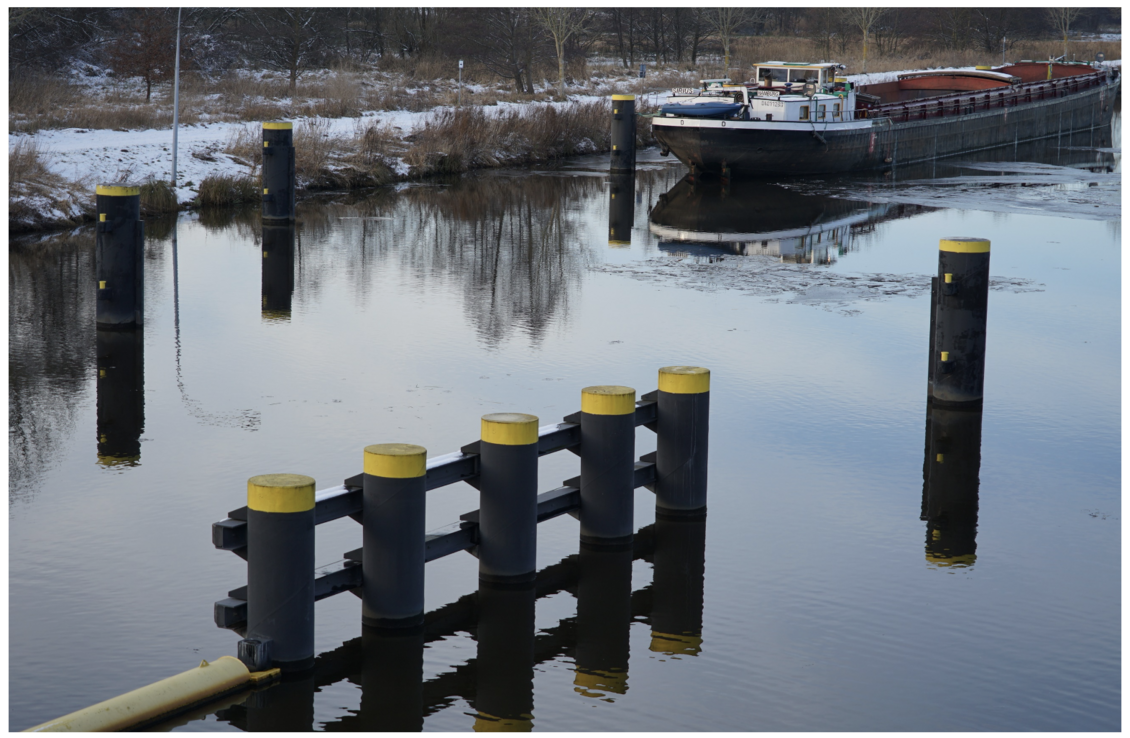
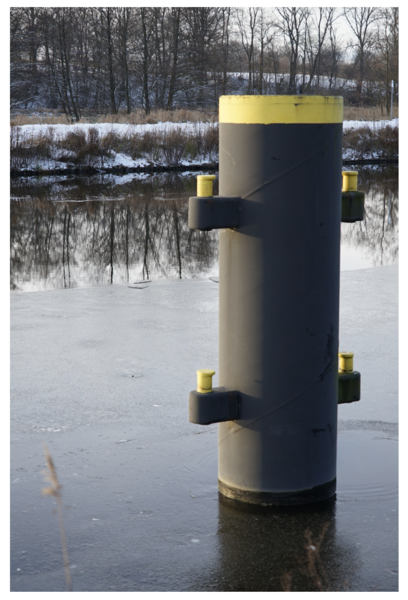
Dolphins can consist of individual piles or bundles of piles. In the past, tree trunks were used as dolphins, which were driven into the ground. Today, steel piles or sections composed of sheet piles are mostly used.
To reduce the contact forces between the ship and the dolphins, they can be fitted with fenders.
2. Loads and design
If dolphins are designed as mooring dolphins, the rope tension represents the decisive load. The rope tension is influenced by wind and current forces. These loads are assumed to act statically in a calculation.
Breasting dolphins receive their load from the mooring maneuver of ships. The design is based on the breasting energy exerted by the ship, which can be expressed by the integral of the force-displacement relationship of the dolphin deformation. The kinetic energy of the mooring ship to be absorbed by the dolphin is referred to as the required working capacity A and can be calculated using the following equation:
with:
A required working capacity
FR(s) reaction force between ship and dolphin as a function of displacement
smax maximum displacement of the dolphin
For a linear force-displacement behavior, the working capacity can be calculated in a simplified way with:

with:
FR,max reaction force between ship and dolphin at the maximum displacement smax
The force FR is transmitted from the dolphin via the bedding into the soil. The magnitude of the soil pressure from the forces transmitted by the dolphin into the soil depends on the displacement. Various models are available for the soil pressures, which are discussed below.
Approaches for calculating the kinetic energy to be absorbed by the dolphin - as the required working capacity - are presented in “Recommendation of the Committee of Waterfront Structures”, EAU, E60, Section 6.15.
Do you want to get started directly with the design of dolphins? Order the low-cost trial version with a seven-day right of use now: GGU-DOLPHIN (Testlicence for 7 days).
3. Approaches for the design of dolphins
Moored or mooring ships displace the dolphin against the ground, increasing a bedding stress until a limit stress is reached. Two approaches for calculating the deformation-dependent interaction between dolphins and the soil have proven effective:
3.1 Dolphin design after BLUM
With the BLUM method, the spatial earth resistance Eph in front of the dolphin is calculated according to the classical earth-pressure theory. The BLUM equivalent force C is applied at the theoretical base point, thus achieving a restraint of the system in the soil. The required embedment depth of the dolphin results from the moment equilibrium around the base point. Thus, the ultimate limit state of the soil is used as the bedding, irrespective of deformation. The method is only suitable to a limited extent for verifying the state of serviceability.
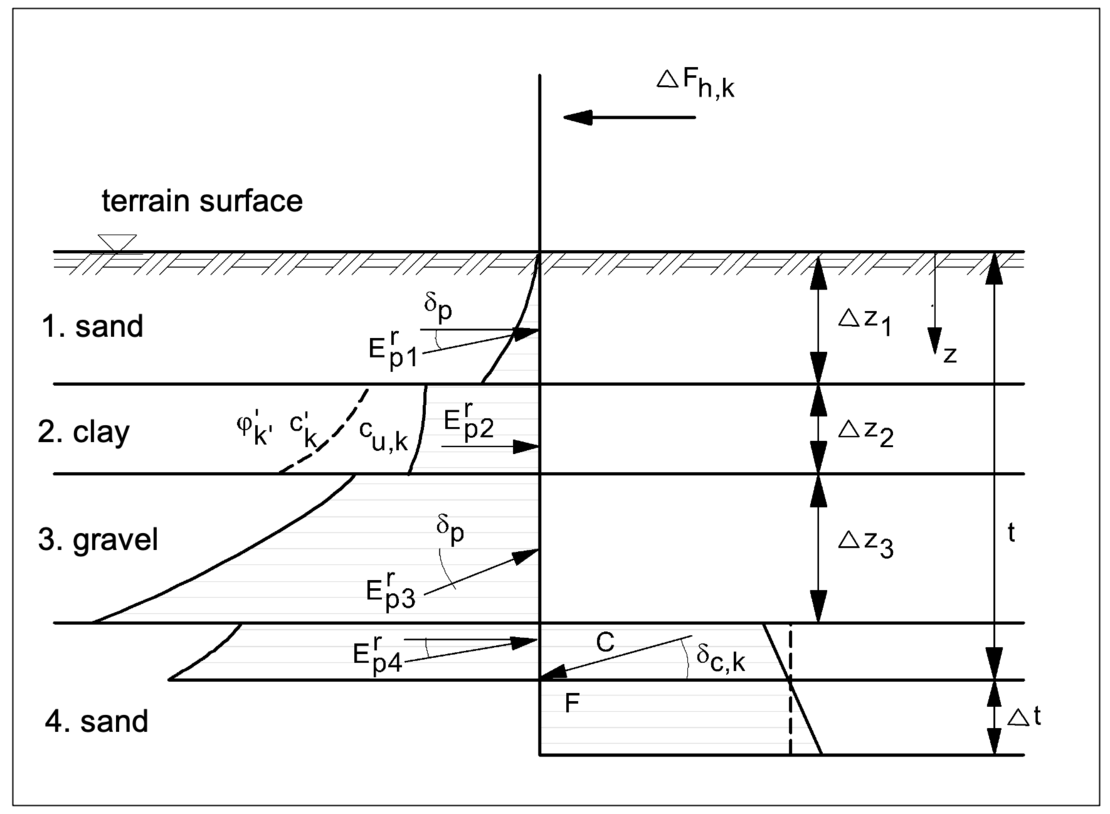
According to “Recommendation of the Committee of Waterfront Structures”, EAU, E218, the calculation of the characteristic spatial earth resistance is recommended as spatial passive earth pressure Erph according to DIN 4085 for the portions from dead load, cohesion and loads on the terrain surface:

3.2 Dolphin design using the p-y-method
The p-y method is a modulus of subgrade reaction method with nonlinear spring characteristics. In contrast to the BLUM method, in which the limit state is considered, the p-y method takes into account the deformations required to mobilize the spatial earth resistance. The interaction between soil and dolphins can be analyzed realistically. The bedding results from the deformations varying over the embedment depth and thus provides more realistic quantities for the loading of the soil and the dolphin. Therefore, this method is more suitable for the calculation of the deformation curve and thus for the investigation of the serviceability limit state design.
For the proof of the earth support, the design value of the activated bedding force Fh,d must not exceed the design value of the earth resistance Eph,d that can be mobilized:

with p*u as the maximum value of the p-y curve. The following graphs show examples of qualitative p-y curves for a.) sand, b.) soft cohesive and c.) stiff cohesive soil.
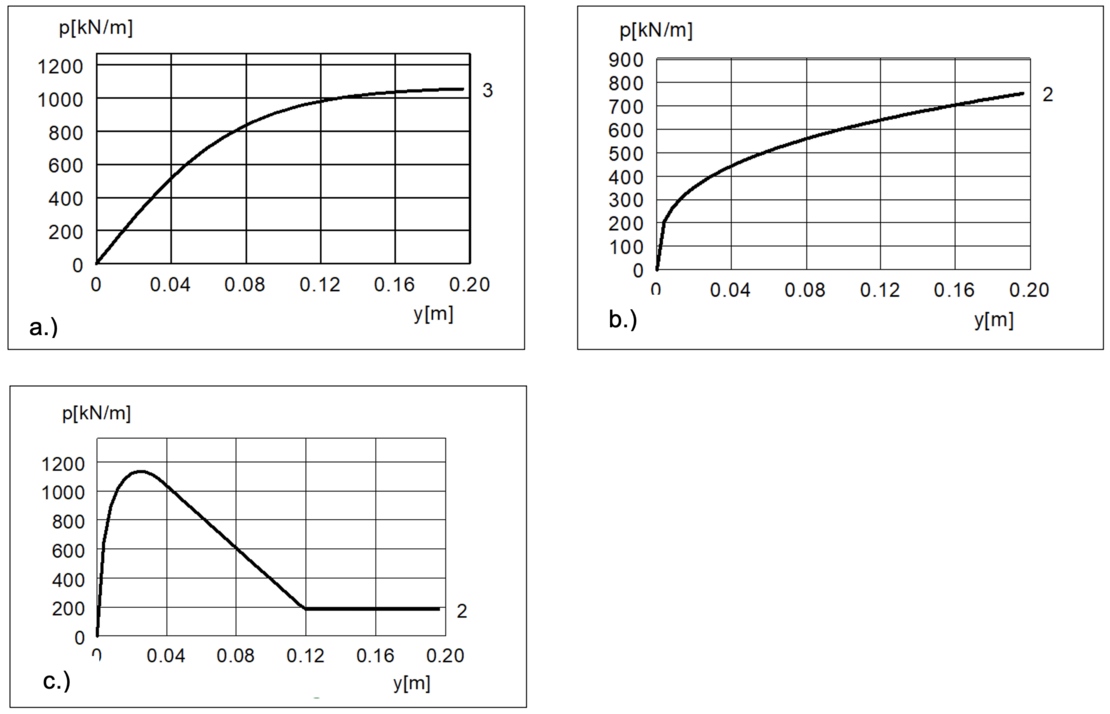
Influences such as the consistency of the soil, the density, the type of loading - static or dynamic - can be taken into account, as well as the softening of cohesive stiff soils.
In contrast to the BLUM method, the p-y method does not directly provide the embedment depth of the dolphin; it is determined in an iterative calculation.
Do you want to get started directly with the design of dolphins? Order the low-cost trial version with a seven-day right of use now: GGU-DOLPHIN (Testlicence for 7 days).
4. Example of the use of the computer program GGU-DOLPHIN (incl. video)
For the example shown below, a dolphin with loads from a mooring process of a ship (m = 5.000 t) and from rope tension of 200 kN , the following video shows how the dolphin’s design can be performed using the computer program GGU-DOLPHIN:
Notes on use
All texts, images and media listed here are subject to copyright and are the intellectual property of Civilserve GmbH. Use is only permitted with appropriate reference and a link to this source.
